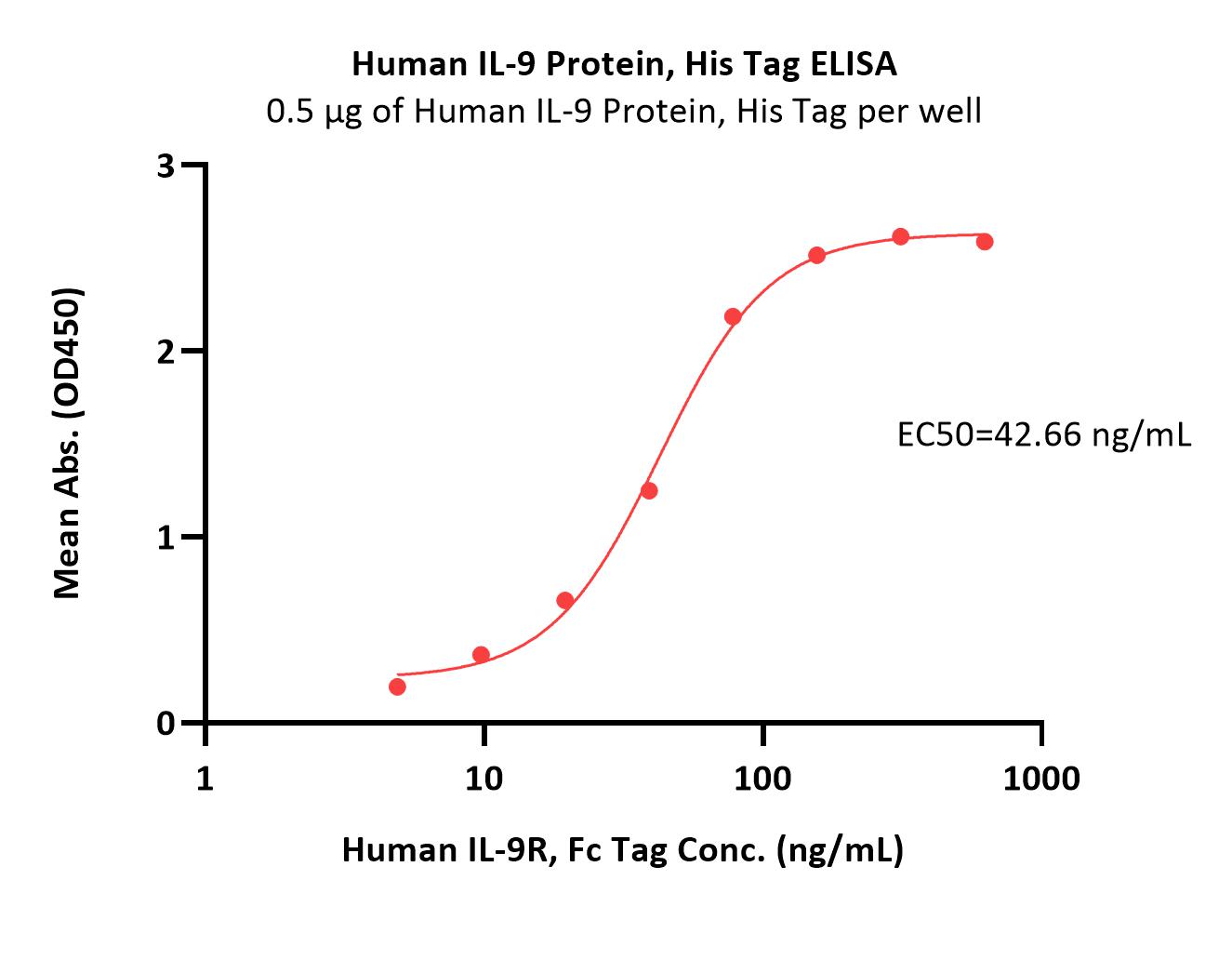分子别名(Synonym)
Interleukin-9 receptor,IL-9 receptor,IL-9R,CD129
表达区间及表达系统(Source)
Human IL-9R, Fc Tag (ILR-H5251) is expressed from human 293 cells (HEK293). It contains AA Ser 41 - Pro 270 (Accession # Q01113-1).
Request for sequence
蛋白结构(Molecular Characterization)

This protein carries a human IgG1 Fc tag at the C-terminus.
The protein has a calculated MW of 52.4 kDa. The protein migrates as 60-66 kDa under reducing (R) condition (SDS-PAGE) due to glycosylation.
内毒素(Endotoxin)
Less than 1.0 EU per μg by the LAL method.
纯度(Purity)
>90% as determined by SDS-PAGE.
制剂(Formulation)
Lyophilized from 0.22 μm filtered solution in PBS, pH7.4 with trehalose as protectant.
Contact us for customized product form or formulation.
重构方法(Reconstitution)
Please see Certificate of Analysis for specific instructions.
For best performance, we strongly recommend you to follow the reconstitution protocol provided in the CoA.
存储(Storage)
For long term storage, the product should be stored at lyophilized state at -20°C or lower.
Please avoid repeated freeze-thaw cycles.
This product is stable after storage at:
- -20°C to -70°C for 12 months in lyophilized state;
- -70°C for 3 months under sterile conditions after reconstitution.
电泳(SDS-PAGE)

Human IL-9R, Fc Tag on SDS-PAGE under reducing (R) condition. The gel was stained with Coomassie Blue. The purity of the protein is greater than 90%.
活性(Bioactivity)-ELISA

Immobilized Human IL-9 Protein, His Tag (Cat. No. IL9-H52H9) at 5 μg/mL (100 μL/well) can bind Human IL-9R, Fc Tag (Cat. No. ILR-H5251) with a linear range of 5-78 ng/mL (QC tested).
Protocol
背景(Background)
Interleukin 9 receptor (IL9R) also known as CD129 (Cluster of Differentiation 129) is a type I cytokine receptor. IL9R also denotes its human gene. The protein encoded by this gene is a cytokine receptor that specifically mediates the biological effects of interleukin 9 (IL9). The functional IL9 receptor complex requires this protein as well as the interleukin 2 receptor, gamma (IL2RG), a common gamma subunit shared by the receptors of many different cytokines. The ligand binding of this receptor leads to the activation of various JAK kinases and STAT proteins, which connect to different biologic responses.






















































 膜杰作
膜杰作 Star Staining
Star Staining











